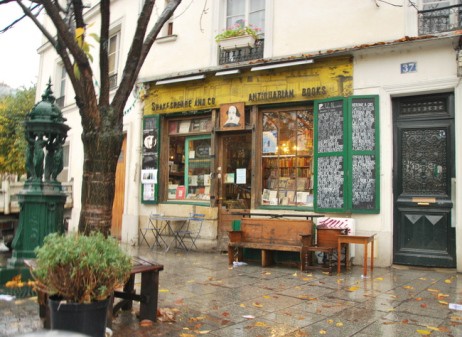Justin E.H. Smith: On writing about French identity, shared culture and immigration
20 January 2014
Ann Mah: Reading and eating in Paris
31 January 2014Mary Louise Roberts: The Other Stories of GIs in France After Liberation
As I sat in the tiny room of a local archive in Le Havre, I couldn’t believe what I was reading. Spread out in front of me on the wooden desk was a collection of angry letters, dated 1945, written by citizens of this French port to their mayor. The target of their rage were the thousands of American soldiers stationed north of town. “Attacked, robbed, run over both on the street and in our houses, this is a regime of terror, imposed by bandits in uniform,” wrote one irate citizen.
A local police blotter in the file provided the reason for this fury: it listed one crime after another committed by the G.I.s. On 11 June, 1945, for example, there were six incidents of breaking and entering, two with assault and two with theft, as well as four other assaults and two other thefts—all at the hands of the Americans. From one end of Le Havre to another, the G.I.s were wielding their guns and fists to get what they wanted, whether it was cognac, money or women.
Why had I never heard this story about Normandy? As a college professor, I had lectured for years on the achievements of the Allied army in the European theater, from its liberation of France to its victory in Berlin. I thought I knew a lot about the Allied presence in Europe. But I had never heard anything like this. Worse still, the violence was not confined to Le Havre. In the following months, I would look at similarly angry letters in St. Lô, Caen, Reims, and Paris. Why did I not know about this before?
The answer lies in how we have heard the story of Normandy. American historians of the European theater (most famously, Stephen Ambrose) have focused mostly on the day-to-day heroics of the G.I. Such an approach is, of course, laudable: American soldiers fought bravely in Normandy and made enormous sacrifices. But such narratives almost completely leave the French out of the picture. The French people form a mere landscape against which the G.I.s fight for freedom. In movies such as Saving Private Ryan, the French are almost entirely erased from view. In that movie, the G.I.s could really be liberating any country in Europe.
In addition, the narratives we read of the Second World War are overwhelmingly written on a large rather than a human scale. We learn a great deal about key battles and troop movements, but not enough about their effect on the men, women and children who once called those battlefields home. In the case of Normandy, pushing civilians to the peripheries of the picture also allows us to ignore their contributions as comrades and resistance fighters. Normans informed the G.I.s concerning German artillery positions. They showed them shortcuts and safety zones in the woods. They rescued paratroopers from certain death in the flooded swamps. They hid and cared for the wounded at the risk of their own lives.
In writing What Soldiers Do: Sex and the American G.I. in World War Two France, 1944-1946, I sought to tell another story of D-Day and the Norman invasion: one which portrays the American G.I.s as the human beings they were, and one which presents the French as comrades in arms and agents of their own liberation.


